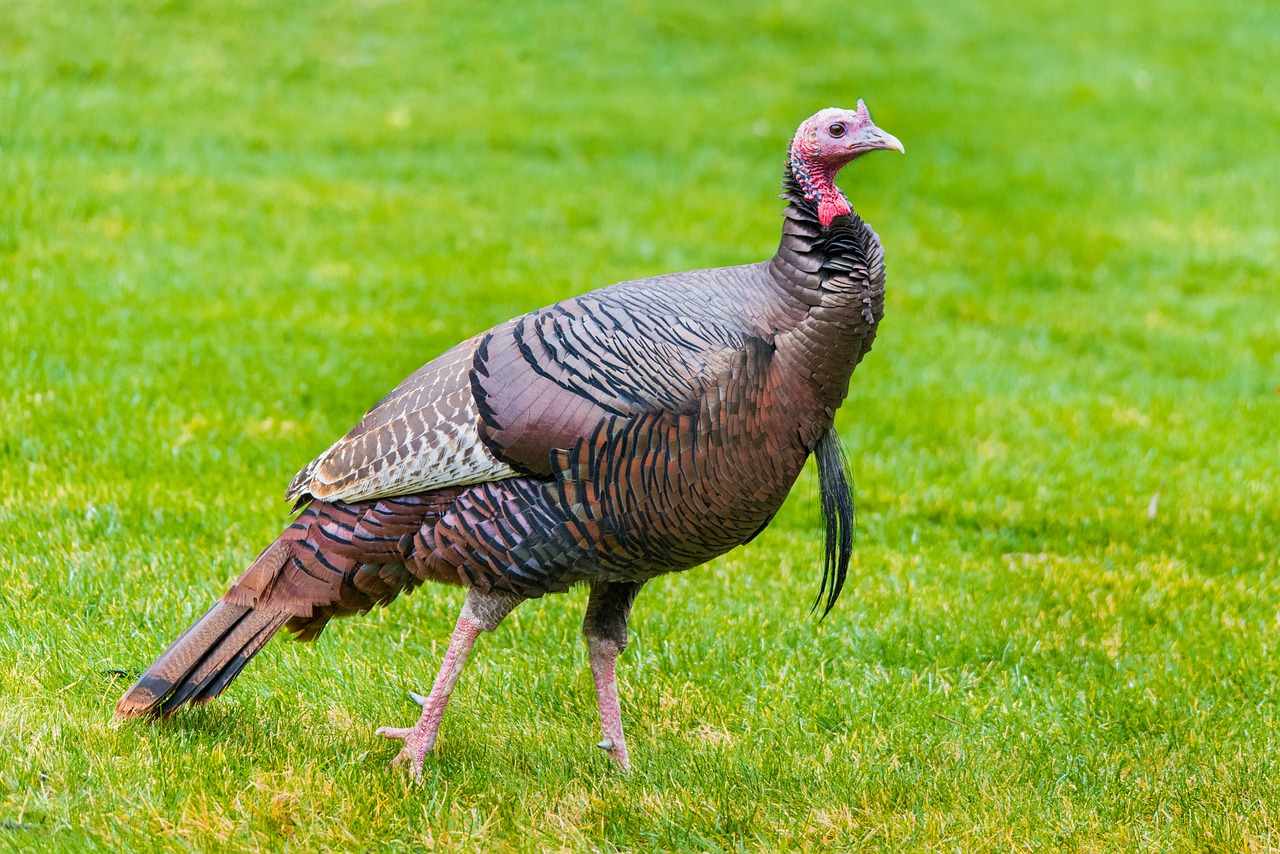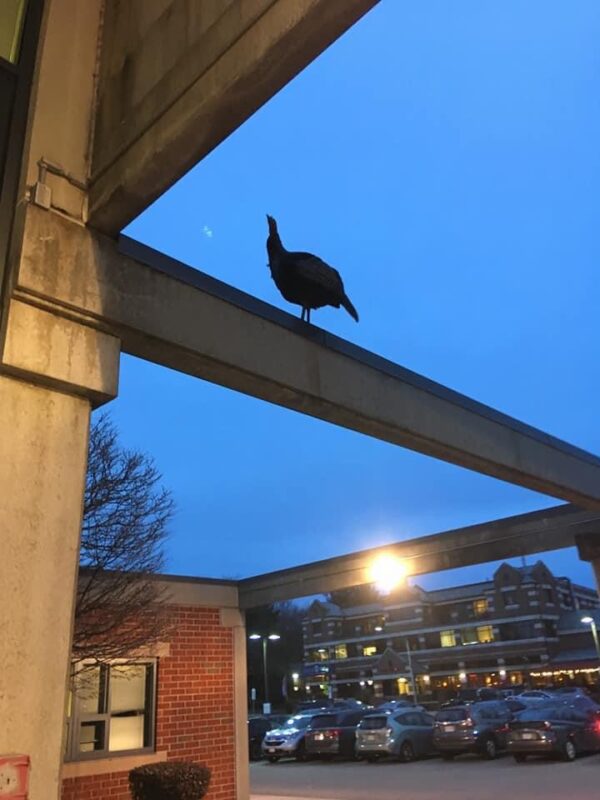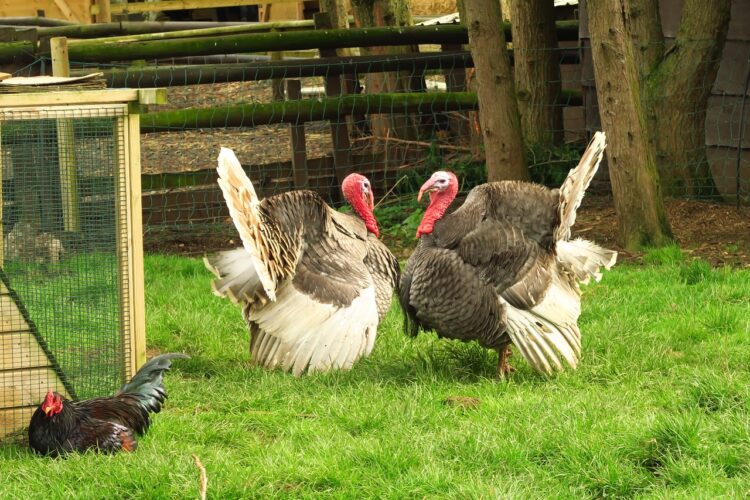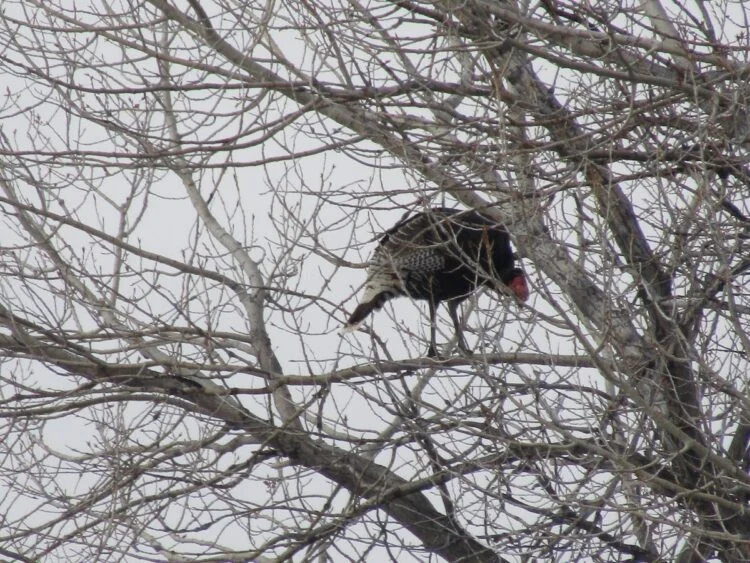Rick and Morty is a hilarious sci-fi show on Adult Swim that is no stranger to scientific references. A recent episode brought up an unexpected natural history fact that left fans wondering. The climax of “Rick & Morty’s Thanksploitation Spectacular” presented an interesting question about turkeys. Do turkeys sleep in trees? Here’s how it came up:
Let’s set the scene. Thanksgiving in Washington, D.C. A huge cornfield, summoned by an ancient alien shaman, has sprung up on the National Mall. Amidst the dense stalks, two ghoulish sets of extraterrestrial warriors fight an army of hybrid turkey-human super-soldiers. The turkey soldiers are evidently trying to take over the world, and (I mean, obviously) turn everyone into turkey people. Rick, Morty, and the president of the United States confront the turkey-monster’s leader. He’s a turkey-hybrid-clone of POTUS (because of course he is). Rick and Morty tell Turkey-president that the jig is up and that he should surrender. The Turkey President responds:
Action resumes without further discussion of this out-of-left-field nature tidbit. POTUS and Turkey-President engage in a vicious hand-to-hand struggle. Meanwhile, Rick and Morty blast off to follow the Washington Monument into space (again, because, duh). Their mission: prevent it from showering Earth with cosmic waves that will convert the rest of America’s turkeys into supersoldiers. In a momentary pause in the chaos, Morty, seeming hesitantly thoughtful, asks his Grandpa:
He’s abruptly cut off by Rick’s usual belching nihilism, but the rest of us were left hanging along with Morty.
When most of us envision turkeys, we picture the plump, grounded birds that adorn our Thanksgiving tables. But does our traditional image of turkeys align with reality? Specifically, do turkeys actually sleep in trees as some claim? This unusual behavior seems to defy the turkey’s bulky build.
Let’s take a deeper look at the roosting habits of turkeys to get to the bottom of this mystery.
Turkeys Can Indeed Fly Into Trees
While turkeys spend their days ambling around on the ground, they are in fact capable of flight. Wild turkeys can fly at speeds up to 55 miles per hour over short distances. Their powerful legs allow them to quickly explode upward and roost on branches.
Domestic broad-breasted turkeys reared for consumption are heavier and less agile. But even these turkeys retain enough of their wild instincts to flutter up to a tree perch on occasion.
So how do these hefty birds manage to sleep balanced on fragile tree limbs?
Special Physical Adaptations Allow Tree Roosting
Turkeys have several physical attributes that enable them to roost in trees
-
Strong muscled legs and clawed feet provide grip and balance.
-
Pointed tail feathers act as a rudder to steer in flight.
-
Broad rounded wings generate rapid lift.
-
Lightweight bones and dense feathers create a low body weight relative to size
So with their temporary flight capabilities and built-in climbing gear, turkeys are well-equipped for accessing their treetop roosts.
Why Do Turkeys Prefer the Tree Canopy for Sleeping?
Turkeys aren’t just showing off their flying skills when they flutter skyward at night. Roosting in trees provides several key benefits:
-
Escape from ground predators like foxes, coyotes, raccoons, and feral cats.
-
Shelter from cold winds and wet ground.
-
A bird’s eye view to spot potential threats.
-
Warmth from huddling together in a group.
By retreating to the relative safety of an elevated perch, turkeys reduce their chances of becoming a late-night snack for a hungry predator.
Roosting Routines and Preferences
Tree roosting is a year-round tradition for wild turkeys. Here are some fascinating facts about their overnight treehouse behavior:
-
Male turkeys prefer the highest branches, while hens take lower perches.
-
Dominant birds get first dibs on prime sleeping spots.
-
Turkey flocks may return to the same roost trees night after night.
-
Ideal roost trees have dense foliage with sturdy horizontal branches.
-
Birds start assembling in trees about two hours before sunset.
-
Juveniles as young as 14 days old can make the vertical trek.
-
Perched turkeys stand motionless to conserve energy overnight.
So sleeping in trees is certainly an essential part of the daily life cycle for wild turkeys. But what about their tame domestic counterparts?
Barnyard Turkeys Follow Their Wild Instincts
Interestingly, domestic turkeys also exhibit remnants of the ancient roosting impulse passed down from their wild ancestors. If allowed to range freely, they will still seek out the safety and comfort of an elevated perch at night.
You may find your free-range turkeys:
-
Roosting in barn rafters.
-
Perching on top of coops.
-
Nestling into haylofts.
-
Balancing on yard fences.
So even docile, chunky backyard turkeys retain that innate urge to bunk down for the night off the ground. It’s an ingrained habit that links all turkeys to their wild heritage.
Roosting Rituals Connect Turkeys to Their Past
When we see turkeys spread their wings and take flight into the sheltering canopy of a roost tree, we are observing a ritual rooted deep in the species’ origins.
This evening routine has endured for ages as an integral part of what makes turkeys uniquely adapted for survival. By examining turkey roosting behaviors, we gain insight into long-held traits and instincts of a fascinating bird.
So although our holiday turkeys may appear quite different than their wild relatives, the old ways still remain ingrained within. And we can be certain that whether rain or shine, in wild woods or backyard coops, after the sun sets, turkeys will dutifully ascend to a place of shelter and security above the ground to slumber.

Too big for the air: Can turkeys fly?
Given that Wild turkeys are absolutely beefy, it’s surprising that they can fly at all. Realistically, they rarely seem to do any flying without a really good reason to do so. The heavier the bird, the harder it is to get all that bulk moving. That’s a lot of work!

Because of this, females, which average just about half the weight of male birds flu more often than males. That difference in size is what naturalists call sexual dimorphism (but more on that in another post!). Another interesting point—domestic turkeys, which are bred to be way heavier and meatier (for obvious reasons) than wild turkeys, cannot fly, because they are way too big! Notably, Turkey President specified “in the wild“, so I guess he was right about that, too.

Was Turkey Man telling the truth? Do turkeys really sleep in trees?
I’m excited to report that this is a pretty simple answer: Yes, absolutely. In fact, the writers of Rick and Morty are not only right that turkeys can fly, and sleep in trees. They are also right about the reason that they do this. Specifically, to avoid being turkey dinner for any of their natural predators.

I’m not particularly surprised at this accuracy. As I mentioned earlier, despite the show’s zanyness and wild disregard for narrative niceties, the actual science tends to be pretty well-researched. It is often based (at least at the beginning) on some observed or theoretical concepts in our universe. Apparently (and to my great pleasure) this extends to natural history knowledge.
Back to turkeys, though. The Wild Turkey (Meleagris gallopavo), familiar to most Americans as just “turkey” is one of North America’s heaviest flying birds. Males weighing up to 24 pounds (11kg) are not rare, with occasional individuals up to 30 pounds and beyond! For reference, the United States’ national bird, the Bald eagle (Haliaeetus leucocephalus) weighs only around 9 pounds on average. This is despite the eagle’s whopping wingspan usually exceeding 6 feet.
Turkey Poults Roosting mbo blog
FAQ
How long will a turkey stay in a tree?
Where do wild turkeys sleep during the night?
Why do wild turkeys roost in trees?
Why would a turkey be in a tree?
Do turkeys sleep in the same tree every night?
Turkeys do not sleep in the same tree every night. They often roost in different trees to avoid predators that may be watching them. What Kind Of Trees Do Wild Turkeys Sleep In? Wild turkeys prefer to roost in trees with thick branches and foliage that provide good cover. They usually choose hardwood trees such as oak, hickory, and maple.
How do turkeys sleep?
All About Birds describes turkey sleeping habits by explaining that turkeys fly into the lower limbs of trees at sundown and move from branch to branch to a higher roost spot. This debunks the most common myth about turkeys, which is that they can’t fly.
Where do turkeys sleep in winter?
Wild turkeys love to sleep in trees during winter. Most times, they stay in areas where food is easily accessible. During the day, they hunt for food and rest up in the trees at night. Domesticated turkeys sleep in brooders in enclosed pens. They love sleeping in groups during winter for warmth and safety. Where Do Baby Turkeys Sleep?
Which tree is best for wild turkeys?
The favorite tree for wild turkeys is the pine tree. It is available all year, and it offers ample coverage. Pine tree leaves provide a cushion on the forest floor, allowing turkeys to jump down safely without getting hurt. How Do Wild Turkeys Sleep in Trees?
